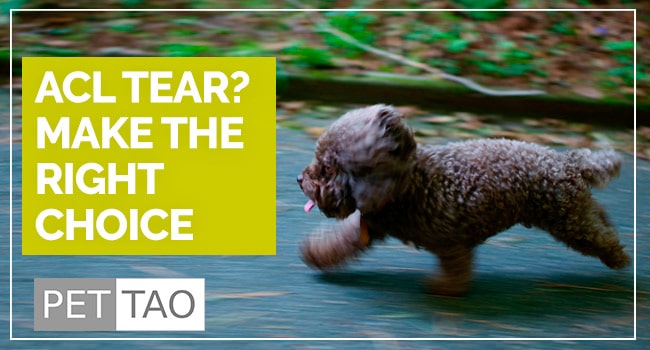I’m going to share a story about my good friend Stella, who suffers from torn knee ligaments.
You’d probably never suspect her problems on your own.
You see, Stella is a young, healthy dog in the prime of her life. Stella plays hard.
She runs, jumps, twists, turns, and retrieves any ball thrown her way.
Comparatively, Stella is just like an NFL football player, an athletic freak of nature.
And, just like an NFL player, Stella has knees that appear very durable.
But, in reality, Stella’s knees are quite fragile.
The same knees which allow her to jump on the bed, climb up the stairs, and most importantly, walk around and perform normal daily activities, are quite susceptible to debilitating injury.
Torn Knee Ligaments and Knee Injuries
How many times have you heard the unfortunate story of the NFL player’s career cut short because of a torn knee ligament or knee injury?
What about the college basketball player jumping for a rebound only to land on the opposing player’s foot and awkwardly hyperextend his knee while crumbling to the gym floor?
The examples go on and on.
Unfortunately, the same is true for dogs and absolutely applies to our canine companions.
Sadly, we see knee ligament injuries in our practices on an almost weekly basis.
Dog Cranial Cruciate Ligament Tear: What a Pain in the Leg
Cruciate knee ligament tears are painful!
Luckily, a torn knee ligament in your dog is not life-threatening.
But, knee injuries are often extremely debilitating and lead to pain, suffering, and an inability to perform routine daily activities.
In veterinary medicine, we call torn knee ligaments“cranial cruciate ligament injuries of the stifle.”
Hold on, you say, what’s a stifle?
Well, the stifle is the veterinary term for the knee.
So, stifle equals knee!
Other names you might hear for a cranial cruciate ligament injury include the following:
- Torn ACL in dogs
- Dog cruciate ligament tear
- Canine torn knee ligament
- Cranial cruciate ligament rupture
- CCL disease.
Semantics aside, the main thing you need to know is the following: If your dog has a torn cruciate ligament in the stifle, your dog needs veterinary attention.
Torn Knee Ligament Pain
Yes, you should seek veterinary attention if your dog has been limping for more than a couple of days.
Why? The main reason is, your dog is in pain.
If you injured your leg and experienced pain, you’d most likely take something for it. You might use an NSAID like Tylenol or Ibuprofen. Or, maybe an herbal remedy for pain.
You can’t give your dog human NSAIDS, but your vet has canine NSAIDs to help your dog feel better.
How Bad is the Tear?
Evaluation of the injury is another important reason to see your vet.
You might be lucky! If it’s a partial tear, your vet may recommend crate rest for a while.
Sometimes, partially torn knee ligaments heal on their own.
Other times, non-surgical procedures can heal partial tears.
However, if the tear is complete, surgery is the only option for repair.
If you don’t take the proper actions, your dog could suffer:
- Contralateral ACL tear
- Decreased range of motion
- Degenerative joint disease
- Exercise intolerance
- Meniscal Tear
- Muscle atrophy
- Pain
- Problems with other limbs
- Weight gain.
It’s always best to play it safe and get the lame leg checked!
A good holistic veterinarian will take into account your dog’s age, size, lifestyle, and more in helping you choose the best treatment protocol for torn knee ligaments.
Powerful Tools to Help Your Dog’s Ligament Challenges
There are many quick and easy changes you can make at home to help you give your dog an edge on easing tendon and ligament challenges.
- Learn more about torn ligaments and cruciate disease.
- Provide joint support. PET | TAO Harmonize Joint is a blend of Eastern herbs and Western supplements working together to lubricate and restore your dog’s joints.
- Ease your dog’s discomfort naturally. PET | TAO Comfort is a blend of herbs and supplements to soothe your dog’s arthritic challenges to make him/her more comfortable.
- Try PET | TAO Freeze Dried Beef Liver Treats. According to TCVM, the liver controls tendons and ligaments. As few as 5-6 treats per day can make a huge difference in your dog’s tendon and ligament health!
- Try a Blood-building TCVM Diet. PET | TAO Zing dog food builds Blood. According to TCVM, Blood deficiency leads to ligament tears.
- Learn more about TCVM Herbal Remedies. Chinese medicine offers many amazing natural solutions for ligament and cruciate challenges. Some good examples are:








